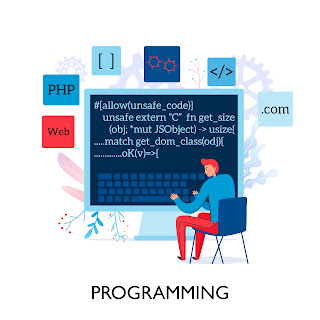Abstract
In 2025, Artificial Intelligence (AI) is no longer a futuristic concept — it’s an integral part of our digital lives. One of the most overlooked areas where AI is making a significant impact is email communication. From spam filtering and predictive typing to intelligent prioritization and auto-responses, smart email solutions powered by AI are redefining how we send, receive, and manage messages. This article explores how AI enhances email productivity, what features define a smart email system, and how individuals and businesses can benefit from adopting this next-gen communication tool.
Introduction: Why Email Needs to Get Smarter
Despite the rise of instant messaging platforms, email remains the backbone of professional communication. Inboxes are flooded daily, leading to information overload and reduced productivity. Enter Artificial Intelligence — a game-changing force that transforms traditional email into a proactive communication assistant. AI-driven smart email systems provide automation, contextual intelligence, and personalized experiences that boost efficiency and help users stay focused.
What Is Smart Email?
Smart Email refers to AI-integrated email platforms that offer intelligent features like:
-
Auto-categorization of messages
-
Predictive typing (Smart Compose)
-
Smart replies
-
Spam and phishing detection
-
Meeting scheduling
-
Natural Language Processing (NLP)
These features enable users to streamline email management, improve communication accuracy, and minimize repetitive tasks.
Key Features of Smart Email Powered by Artificial Intelligence
1. AI-Based Spam and Phishing Filters
Traditional filters flag known spam; AI goes further by identifying malicious patterns in real-time, protecting users from evolving threats.
2. Smart Compose and Auto-Correct
Powered by Natural Language Processing, features like Google’s Smart Compose suggest sentence completions, improving writing speed and tone.
3. Priority Inbox
AI learns your behavior — who you reply to most, what time you’re most active — and adjusts your inbox to prioritize important emails.
4. Automated Responses
AI analyzes the context of messages and generates appropriate one-click replies (e.g., “Sounds good,” “Let’s reschedule”).
5. Email Summarization
Advanced models summarize long threads into quick snippets, helping users understand key points without reading every message.
6. Voice and Virtual Assistant Integration
AI assistants like Siri, Alexa, and Google Assistant now read emails aloud, respond via dictation, and schedule meetings — hands-free.
How Artificial Intelligence Transforms Email for Businesses
Businesses benefit from AI-enhanced email through:
1. Enhanced Customer Support
AI can auto-reply to common queries or escalate urgent issues based on content detection.
2. Team Productivity
Smart tools categorize and delegate tasks automatically based on email content.
3. Sales and Marketing
AI tracks open rates, personalizes subject lines, and automates follow-up emails — increasing engagement.
4. Email Analytics
Advanced insights like sentiment analysis and engagement tracking help businesses optimize email communication strategies.
Popular Smart Email Tools Using Artificial Intelligence
| Tool | Key AI Features |
|---|---|
| Google Gmail | Smart Compose, Smart Reply, Priority Inbox |
| Microsoft Outlook with Copilot | NLP, email drafting, scheduling |
| Superhuman | AI-powered prioritization, follow-up tracking |
| Missive | Shared inboxes, team collaboration with AI filters |
| Zoho Mail | Smart filtering, email analytics, custom AI bots |
Benefits of Using Smart Email in 2025
-
Increased Efficiency: Less time spent writing and organizing emails.
-
Better Security: Real-time AI scans improve phishing protection.
-
Personalized Experience: AI adapts to your style and communication patterns.
-
Business ROI: Automated workflows reduce workload and improve engagement rates.
The Future of Smart Email: What’s Next?
1. Emotionally Aware Emails
Future AI may suggest rewrites based on emotional tone — e.g., suggesting a softer phrasing if your email sounds too harsh.
2. Autonomous Email Management
Imagine an AI assistant that fully manages your inbox: replies to routine messages, flags only important ones, and schedules follow-ups.
3. Multilingual Translation
Real-time translation using AI will enable seamless global communication with automatic, context-aware language adjustments.
4. Deep Integration with Other AI Tools
Smart email will sync with CRM, calendar, and project management platforms using AI to automate workflows end-to-end.
Learning How to Use Smart Email Tools
Skills You Should Learn:
-
Basics of NLP (Natural Language Processing)
-
Understanding email automation rules
-
Using tools like Zapier for AI integrations
-
Prompt writing for AI assistants
-
Customizing smart reply and filtering settings
Top Courses (Free & Paid):
-
Coursera: AI for Everyone by Andrew Ng
-
Udemy: Email Productivity Using Gmail and AI Tools
-
LinkedIn Learning: AI Tools for Communication Professionals
Career Roles Related to Smart Email and AI Communication
-
AI Product Manager
-
Email Automation Specialist
-
Communication Strategist
-
NLP Engineer
-
Technical Writer (AI-based content)
Summary: Key Takeaways
-
Smart Email combines traditional email platforms with Artificial Intelligence to improve speed, clarity, and security.
-
Features like Smart Compose, auto-prioritization, and summarization make emails more manageable.
-
Smart email enhances productivity for individuals and organizations alike.
-
The technology is evolving — expect smarter, more emotionally aware, and deeply integrated email systems in the near future.
FAQs
Q1: Can smart email help reduce email overload?
A: Yes. AI sorts, filters, and responds to emails based on context, reducing manual work and clutter.
Q2: Is smart email secure?
A: Smart email tools use AI to detect phishing attempts, suspicious links, and unusual behavior, making them more secure than traditional systems.
Q3: Do I need to know coding to use AI email tools?
A: Not at all. The majority of these tools are intuitive and can be used without any technical expertise.
Q4: Can smart email be used for marketing campaigns?
A: Absolutely. AI tools can personalize subject lines, schedule emails for best response times, and track engagement.
Conclusion: AI and the Future of Email
Smart email is no longer a luxury—it’s a necessity. As Artificial Intelligence continues to evolve, it’s reshaping how we approach communication. In 2025, leveraging AI for email helps us communicate faster, smarter, and more securely.
Whether you’re a student looking to boost productivity or a business aiming for seamless workflows, adopting smart email tools is a strategic move toward a more intelligent digital future.
References
-
Google AI – Smart Compose
-
Microsoft Copilot for Outlook
-
Coursera – AI for Everyone
-
McKinsey Report on AI Productivity 2025
-
Forbes Tech Council – Future of Email Communication










